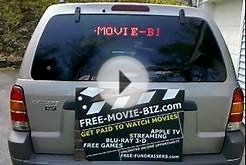Video bloggers are breaking the law if they fail to tell their legions of fans they are being paid to promote products, according to a landmark ruling from the UK advertising watchdog.
The Advertising Standards Authority (ASA) told vloggers it “pays to be honest” after banning a campaign for Oreo biscuits featuring a host of YouTube stars that did not clearly label the videos as having been paid for.
A BBC Newsround investigation found that Mondelēz, the parent company that owns the Oreos brand, signed up a number of stars to promote its product in videos showing an “Oreo Lick Race”.
In a trenchant judgment, the watchdog said: “Ultimately, it pays to be honest … It’s important to note that, if advertisers and vloggers aren’t upfront, not only could they be in breach of the Code, they could also be breaking the law.
“By dealing fairly and honestly with their followers, vloggers can enjoy the benefits of their commercial relationships with advertisers without alienating their fan base.”
Essex YouTuber Emma Blackery, who has 829, 000 subscribers, and PJ Ligouri, who has more than 600, 000 subscribers to KickThePJ, also featured.
The ASA received a complaint from a BBC journalist challenging whether Mondelēz had made clear that the video ads were actually marketing messages.
Mondelēz, which owns the former Kraft and Cadbury brands, said it had not intended to mislead consumers and that a brief given to each of the vloggers said it should be clear the Oreo ad was a promotion. Each of the YouTubers did say they were working with Oreo and the description boxes under each ad stated that the video had been created with the brand, it added.
“It was sufficiently clear to consumers that the videos were ads, ” said Mondelēz.
The ASA said the UK advertising code states that ads must be “obviously identifiable marketing communications”.
The ASA said the YouTubers’ video ads were very much in the style of their regular content posts and so it would not be immediately clear the Oreo clips were marketing communications. The regulator also said the disclosure statements, such as “Thanks to Oreo for making this video possible”, either in the video or in the text descriptions were “insufficient to make clear the marketing nature of the videos”.
“Because the statements did not fully establish the commercial intent of the videos, and because no disclosures were made before consumer engagement with the material, we concluded that the ads were not obviously identifiable as marketing communications, ” the ASA ruled.
“The ads must not appear again in their current form. We told Mondelēz UK to ensure that future ads in this medium made their commercial intent clear prior to consumer engagement.”
The ASA explained the ramifications of its ruling in a website post on Wednesday: “It is perfectly legitimate for vloggers (or bloggers, tweeters) to enter into a commercial relationship and be paid to promote a product, service or brand.
“But when that commercial relationship is in place then the onus is on the advertiser, and by extension the vlogger, to be upfront about it and clearly disclose the fact that they’re advertising. We’re going to be communicating clearly to advertisers the outcome of this ruling and raising awareness amongst vloggers of the need to disclose when the content of their blogs is paid for.”
Ian Twinn, director of public affairs at UK advertisers’ trade body ISBA, said: “We welcome the ASA ruling that vloggers have to obey the rules. At the end of the day consumers deserve respect. There are of course a lot of Vloggers that adhere to the rules and are transparent about their content, but not everyone is equally savvy.
One media law expert believes such overt signalling of commercial messages may make the use of vloggers less popular to advertisers.
Andrew Terry, partner at law firm Eversheds, said: “The twist here is the ASA’s insistence that the commercial nature of the video must be made clear before any consumer engagement. That means that flagging the relationship at some point during the video is not sufficient, which may well make this kind of promotion much less attractive for brand owners.”
• To get the latest media news to your desktop or mobile, follow MediaGuardian on Twitter and Facebook












